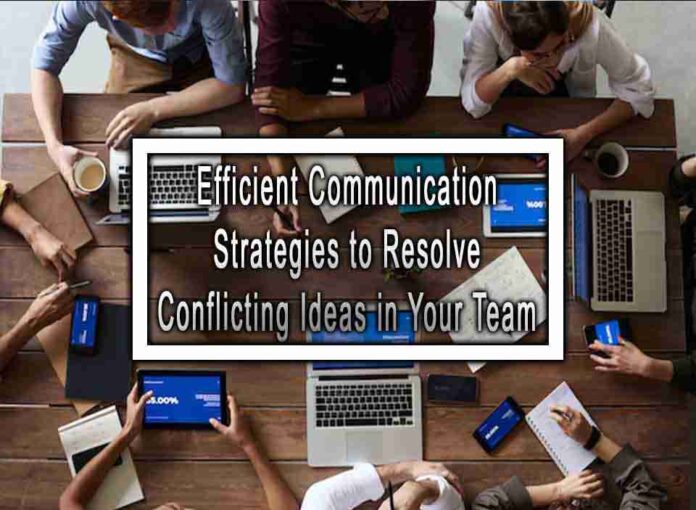Resolving conflicting ideas within a team is crucial for maintaining a healthy and productive working environment. Here are some efficient communication strategies to help you navigate and resolve conflicts effectively:
1. Active Listening
Encourage active listening within your team. Ensure that everyone has an opportunity to express their ideas and perspectives without interruption. Actively listen to each team member’s viewpoint, seeking to understand their reasoning and underlying concerns.
2. Foster a Respectful Environment
Create a team culture that values and promotes respect and open-mindedness. Emphasize the importance of treating each other’s ideas with respect, even if there are disagreements. Encourage team members to express their opinions constructively, without resorting to personal attacks or belittling others’ ideas.
3. Encourage Constructive Dialogue
Foster an atmosphere where team members feel comfortable engaging in constructive dialogue. Encourage them to ask clarifying questions, seek additional information, and challenge ideas in a respectful manner. This helps to promote a healthy exchange of ideas and perspectives.
4. Find Common Ground
Look for areas of agreement or common ground between conflicting ideas. Identify shared objectives or goals that both sides can align with. By focusing on commonalities, you can work towards finding a solution that integrates different perspectives.
5. Explore Multiple Options
Encourage brainstorming and exploring multiple options to address the conflict. Create an environment where all ideas are welcomed and considered. Encourage team members to think outside the box and propose alternative solutions. This approach can lead to innovative and mutually beneficial outcomes.
6. Facilitate Effective Communication Channels
Establish clear and effective communication channels within your team. Provide opportunities for team members to express their opinions in various formats, such as team meetings, brainstorming sessions, or written communication. Ensure that everyone has equal access to these channels and feels comfortable using them.
7. Mediation and Facilitation
In situations where conflicts persist or escalate, consider involving a neutral third party to mediate or facilitate the discussion. This can be a team leader, supervisor, or an external mediator who can help guide the conversation, ensure fairness, and support the resolution process.

8. Focus on the Issue, Not the Person
When discussing conflicting ideas, emphasize addressing the issue at hand rather than attacking or criticizing individuals. Separate the ideas from the person presenting them. By focusing on the content rather than the individual, you can reduce defensiveness and create a more collaborative atmosphere.
9. Consensus Building
Strive for consensus whenever possible. Work towards a solution that accommodates the interests and concerns of all team members. This may involve finding compromises or integrating different ideas into a cohesive solution that everyone can support.
10. Learn from the Conflict
Encourage your team to view conflicts as opportunities for growth and learning. After resolving a conflict, take time to reflect on the process and outcomes. Identify lessons learned and discuss how the team can improve communication and conflict resolution moving forward.
By employing these efficient communication strategies, you can foster a collaborative and inclusive team environment, where conflicts are addressed constructively, and resolutions are reached in a manner that respects the perspectives and contributions of all team members.










